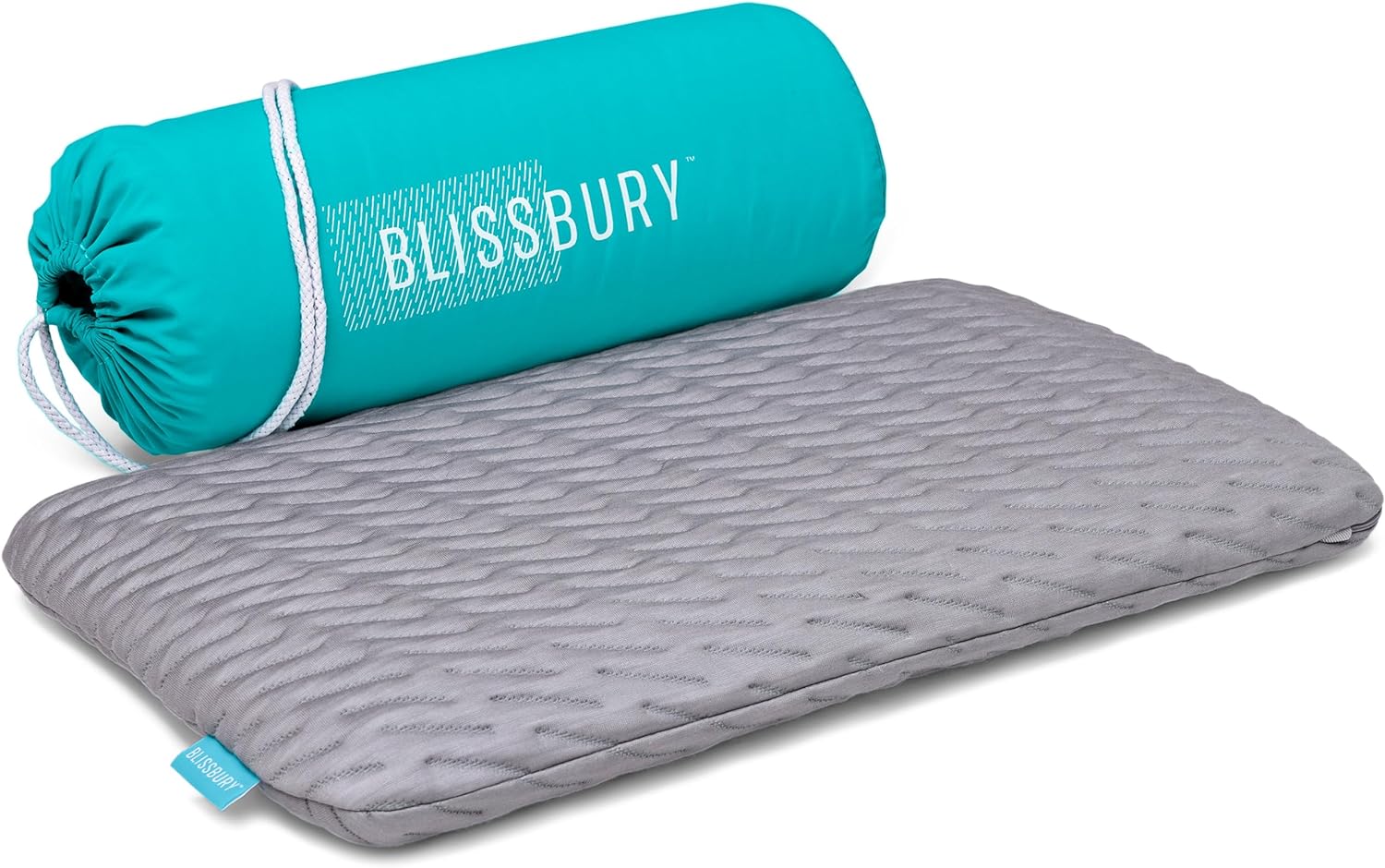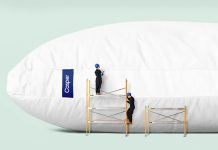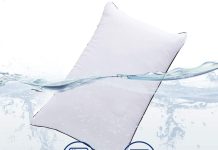Has your once fluffy and supportive pillow become flat and lifeless? Fear not, because we have the perfect solution to revive your beloved cushion! In this article, we will guide you through simple and effective methods to fluff your flat pillows back to life. Say goodbye to restless nights and hello to a fluffy and comfortable sleep experience once again. Say hello to rejuvenated pillows and goodbye to disappointment.
Review contents
Understanding Flat Pillows
Flat pillows can be a frustrating sleep companion, causing discomfort and affecting the quality of our rest. Understanding what causes pillows to go flat, recognizing the signs of a flat pillow, and knowing the importance of fluffing pillows are essential to maintaining a comfortable sleep environment.
Causes of flat pillows
There are several reasons why pillows may lose their loft and become flat over time. One common cause is the natural compression of the pillow fillings with use. As we sleep, the weight and pressure from our heads compress the fillings, gradually reducing their volume. Additionally, the continuous folding and bending of pillows can also contribute to their flattening.
Another factor that can cause pillows to go flat is the breakdown and deterioration of the fillings. Over time, the fibers or foam within the pillow can deteriorate, losing their elasticity and support. This can happen more quickly with lower-quality or older pillows.
Signs of a flat pillow
Recognizing the signs of a flat pillow is crucial to determine whether it’s time to fluff or replace them. One obvious sign is a visibly flattened shape when the pillow is not being used. When the pillow fails to regain its original shape after use, it’s a clear indication that it has become flat.
Another sign to look out for is discomfort or a lack of support while using the pillow. If you find yourself constantly adjusting your pillow or experiencing neck or back pain, it may be a sign that the pillow has lost its intended loft and needs to be fluffed.
Importance of fluffing pillows
Fluffing pillows regularly is essential for maintaining their comfort and support. By fluffing, we restore the pillow’s loft, ensuring adequate elevation and cushioning for our heads and necks during sleep. Fluffing also helps to distribute the fillings evenly, preventing clumping and providing a more comfortable surface.
Moreover, fluffing pillows can improve overall sleep quality. A fluffed pillow provides better alignment for the neck and spine, reducing the chances of waking up with pain or discomfort. Additionally, fluffing can help extend the lifespan of pillows, allowing us to enjoy their support for a more extended period.
Preparing the Pillows for Fluffing
Before we start fluffing our pillows, it’s important to prepare them properly. This involves cleaning the pillows, checking for damages, and removing any foreign objects that may interfere with the fluffing process.
Cleaning the pillows
Cleaning our pillows is an essential first step in preparing them for fluffing. Over time, pillows can accumulate dirt, oils, and sweat, which can affect their performance and comfort. Most pillows can be safely cleaned in a washing machine, following the manufacturer’s instructions. It’s important to use a gentle cycle and mild detergent to avoid damaging the fillings.
Checking for damages
Before fluffing our pillows, it’s important to check for any damages that may need to be repaired. Inspect the seams for any tears or loose stitching and assess the condition of the pillow cover. If any damages are found, it’s best to mend or replace the pillow cover before proceeding with the fluffing process.
Removing any foreign objects
Occasionally, pillows can accumulate foreign objects such as hairpins, coins, or small toys, which can affect their shape and comfort. Before fluffing, carefully inspect the pillows and remove any foreign objects that may have become lodged inside. This will ensure a more effective fluffing process and prevent any discomfort caused by these items.
Fluffing Techniques
Now that our pillows are prepared, it’s time to employ different fluffing techniques to restore their loft and plumpness. Here are some effective methods:
Manual fluffing
One of the simplest ways to fluff pillows is by manually manipulating the fillings. Start by holding the pillow on both ends and gently pushing the fillings towards the center. Then, fold the pillow in half and repeat the process. This method helps redistribute the fillings and restore the pillow’s shape.
Pillow shaking
Another effective technique to fluff pillows is by giving them a good shake. Hold the pillow firmly and vigorously shake it from side to side. This motion helps to loosen and redistribute the fillings, resulting in a fluffier pillow.
Pillow tapping
Tapping is an excellent method to plump up pillows that have lost their shape. Lay the pillow flat on a solid surface and gently pat it all over with your hands. This tapping motion helps to restore the pillow’s loft and remove any clumps within the fillings.
Using Heat
In addition to fluffing techniques, utilizing heat can also help revive flat pillows. Here are two common methods that involve heat:
Dryer method
The dryer method is useful for pillows that are safe to be tumble-dried. Place the pillows in the dryer along with some tennis balls or clean sneakers. Set the dryer to a low heat or air fluff cycle, and allow it to run for about 10-15 minutes. The tumbling action, combined with the heat and weight of the items, helps to fluff the pillows.
Ironing method
For pillows that cannot be machine-dried, the ironing method can be used to restore their fluffiness. Place a damp cloth over the pillow and set the iron to a low heat or steam setting. Gently press the iron over the pillow, moving it in a circular motion. The heat and moisture from the cloth help to reinvigorate the fillings, resulting in a fuller pillow.
Adding Extra Fillings
Sometimes, simply fluffing the existing fillings is not enough to restore a pillow’s loft. In such cases, adding extra fillings can help rejuvenate the pillow. Here’s how to do it:
Choosing suitable fillings
When adding extra fillings, it’s important to choose materials that are compatible with the pillow’s current fillings. For down or feather pillows, additional down or feather fillings can be used. For synthetic fiber-filled pillows, more synthetic fibers can be added. This ensures that the added fillings blend seamlessly with the existing ones.
Loosening the existing fillings
Before adding new fillings, it’s crucial to loosen and separate the existing ones. Gently knead and manipulate the pillow to break up any clumps or lumps within the fillings. This creates space for the new fillings and improves the overall fluffiness of the pillow.
Adding new fillings
Once the existing fillings are loosened, carefully insert the new fillings into the pillow. Start with small amounts and distribute them evenly throughout the pillow, focusing on areas that have become flat or compressed. Avoid overfilling, as this can lead to an uncomfortable pillow. Gradually add the fillings until the desired loft is achieved.
Utilizing Other Household Items
Aside from specific fluffing techniques, there are other household items that can be utilized to revive flat pillows. Here are some methods to consider:
Tennis ball method
The tennis ball method involves placing a few clean tennis balls inside a dryer along with the pillows. As the dryer tumbles, the tennis balls bounce around and help to fluff the pillows. This method is especially effective for pillows with clumped or matted fillings.
Vacuum cleaner method
The vacuum cleaner method is useful for pillows with removable covers. Start by removing the cover and running a vacuum cleaner attachment over the pillow’s exposed fillings. The suction from the vacuum helps to remove any dust, debris, or loose fillings, restoring the pillow’s loft.
Blow dryer method
For smaller pillows or specific areas that need fluffing, a blow dryer can be used. Set the blow dryer to a low heat or cool setting and aim it at the pillow’s fillings. Gently massage and knead the pillow while blowing warm air onto it. This helps to increase the airflow and expand the fillings, resulting in a fluffier pillow.
Storing Pillows Properly
Proper storage is crucial to maintain the fluffiness and longevity of our pillows. Here are some tips for storing pillows:
Using pillow protectors
Before storing pillows, it’s advisable to use pillow protectors to safeguard them from dirt, dust, and moisture. Pillow protectors act as an additional barrier, preventing the fillings from compressing and maintaining their loft. Choose pillow protectors made of breathable materials to ensure proper airflow.
Fluffing before storage
Fluffing pillows before storing them is essential to prevent them from becoming flat over time. Prior to storage, employ one of the fluffing techniques mentioned earlier to restore the pillow’s shape and loft. This helps to ensure that the pillow remains comfortable and supportive when it is retrieved for use.
Avoiding compression
When storing pillows, it’s important to avoid compressing them excessively. Use storage containers or bags that allow the pillows to retain their natural shape and loft. Avoid placing heavy objects on top of the stored pillows, as this can lead to compression and flattening.
When to Replace Flat Pillows
Although fluffing techniques can help revive flat pillows, there comes a time when replacement is necessary. Here are some indicators that it’s time to replace flat pillows:
Reasons for replacement
Over time, pillows accumulate dirt, allergens, and skin cells, making them less hygienic and potentially harmful to our health. Additionally, if a pillow has become lumpy, saggy, or no longer provides adequate support, it may be time to replace it. Personal preferences, changes in sleep positions, and overall wear and tear are also factors to consider when evaluating the need for replacement.
Frequency of replacement
The lifespan of a pillow can vary depending on its quality, usage, and maintenance. On average, pillows should be replaced every 1-2 years, although some pillows may require replacement sooner. Regular assessments of the pillow’s condition and responsiveness to fluffing techniques can help determine when replacement is necessary.
Signs to look for
Signs that indicate the need for pillow replacement include a visibly worn-out appearance, clumping or lumpiness that cannot be resolved through fluffing, and persistent discomfort or pain while using the pillow. If the pillow has lost its shape completely or has an unpleasant odor that cannot be eliminated through cleaning, it’s time to invest in a new one.
Frequent Fluffing Tips
To maintain the loft and comfort of our pillows, it’s important to establish a fluffing routine and practice regular maintenance. Here are some tips for frequent fluffing:
Daily fluffing routine
Incorporate a daily fluffing routine as part of your bed-making process. Start by manually fluffing the pillows using the techniques mentioned earlier, or give them a gentle shake to redistribute the fillings. This daily fluffing helps to restore the pillow’s shape and ensures a comfortable sleep surface each night.
Weekly maintenance
In addition to daily fluffing, it’s beneficial to dedicate time each week for more thorough maintenance. Use a vacuum cleaner attachment to remove any dust or debris that may have settled on the pillows. If the pillows are machine-washable, follow the manufacturer’s instructions for weekly cleaning to maintain freshness and hygienic conditions.
Choosing the right pillows
Selecting the right pillows from the start can greatly minimize the occurrence of flatness and the need for frequent fluffing. Consider your sleep preferences, such as the firmness level and the type of filling that provides optimal support. Investing in high-quality pillows that are designed to retain their loft and shape for an extended period can save both time and effort in the long run.
Conclusion
Flat pillows can disrupt our sleep and lead to discomfort and pain. Understanding the causes of flatness, recognizing the signs of a flat pillow, and knowing how to effectively fluff them back to life are key to maintaining a comfortable and supportive sleep environment. By following the techniques discussed, utilizing heat, adding extra fillings, utilizing household items, storing pillows properly, knowing when to replace, and implementing a frequent fluffing routine, we can ensure that our pillows remain plump, supportive, and conducive to a good night’s rest.



























